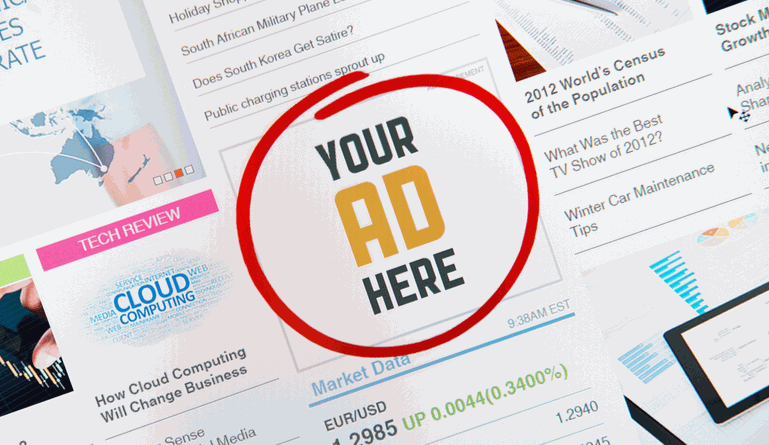Programmatic advertising has been growing as a staple of the digital marketing strategy for businesses everywhere. Social Media Today defines it in one article as “automated buying and selling of media being sold by one machine talking to another machine… automating the decision process of media buying by targeting specific audiences and demographics. Programmatic ads are placed with artificial intelligence (AI) and real-time bidding (RTB) for online display, mobile display, online video, social media advertising, and is expanding to digital outdoor, radio and TV.”
This automated communication helps marketers make the most of their time and their budgets, and the impact of programmatic advertising can’t be ignored. Smart Insights notes, “Programmatic marketing is seen as the future of advertising on the web, with Google targeting 60% of digital advertising budgets spent on Programmatic by next year. According to Forrester, programmatic will account for the majority of all digital advertising spending over the next few years.”
Much like the algorithms that power Amazon and YouTube, suggesting content and purchases based on your past interest and behavior, programmatic advertising shares content with the audiences most likely to engage with it based on their online behavior and data profile. Advertising lands like sponsored articles and videos land on the sponsored content sections of platforms like BuzzFeed, The New York Times and Wall Street Journal.
The social media advantages to programmatic ads
In addition to publisher platforms, programmatic ads can be targeted and distributed on social media platforms as well – and many professionals say that not only can you, you should. Adobe says, “Today, Instagram and Facebook are destinations where marketers can reach huge audiences on mobile and elsewhere. They’re actually leading the pack in the programmatic space, turning digital advertising on its head.”
Why is programmatic advertising for social a good idea?
#Saves time
There is an element of “set it and forget it” to programmatic advertising. There are only so many hours in the day, and a good part of your marketing needs to focus on developing content, understanding audience research, and other elements – not just on buying and optimizing media space. Programmatic advertising helps you run your advertising more effectively and enables you to spend more time developing the content that will create the most impact and programmatic takes care of finding the spaces on social that will best engage with that content.
#Efficient spending
For most businesses, spending marketing dollars on social media and digital advertising makes a lot more sense than spending them on TV ads, billboards, or print marketing. The most efficient way to spend on social is to create filters around who your content is targeted to that match your target audience most closely. Programmatic advertising accomplishes this on a large scale, with the built-in ability to analyze progress and engagement, allowing ad buyers and businesses to use this information to make campaign changes for the most effective campaign spending. Using data to find out what is and isn’t successful helps to make sure you’re not spending money on showcasing content to irrelevant or unengaged audiences.
#More specific targeting
Targeting goes beyond just content that a potential customer has consumed and enables you to select audiences based on a whole range of features, from online browsing and purchasing activity to offline data like loyalty card subscriptions and demographic information like age, neighborhood, job title, marital status, and more. Creating subsects and segments of your audience that enable you to spend your budget wisely by sharing content and advertising with those customers who most closely match your target audience (as established my prior data, research, and purchase history at your company).
#Access to influencers
Social media is where the influencers live. Influencers are like online only or social media only celebrities – individuals with a following based on their personality, interests, or talent who interact with brands as an official or unofficial spokesperson, leading to even more personalized exposure for that brand. Programmatic social media advertising can help you target these niche markets and influencers. There are even programmatic ad buying platforms specifically for influencer platforms; according to Social Media Today, “When buying programmatic ad packages, bundles of influencers appear as options where marketers pay for viewable impressions on influencers’ social media sites and walls. Authenticity is preserved through influencers still having final approval and control over their feeds.”
They also note that “Gnack offers programmatic buying of user-generated content from Snapchat and Instagram influencers with less than 10,000 followers. These ‘micro influencers’ can be very effective at reaching niche audiences based on campaign objectives, target demographics, and preferred hashtags.” The potential for a response from programmatic advertising in the influencer space of social media is already powerful and increasingly promising.
Using programmatic advertising as part of your content distribution strategy helps your business get not just more exposure, but also gets in front of the right audiences. Including social platforms like Facebook, Instagram, Twitter, and LinkedIn in your programmatic targeting and including programmatic advertising as part of your social strategy can help you break through some of the noise and get more engagement with your content.





